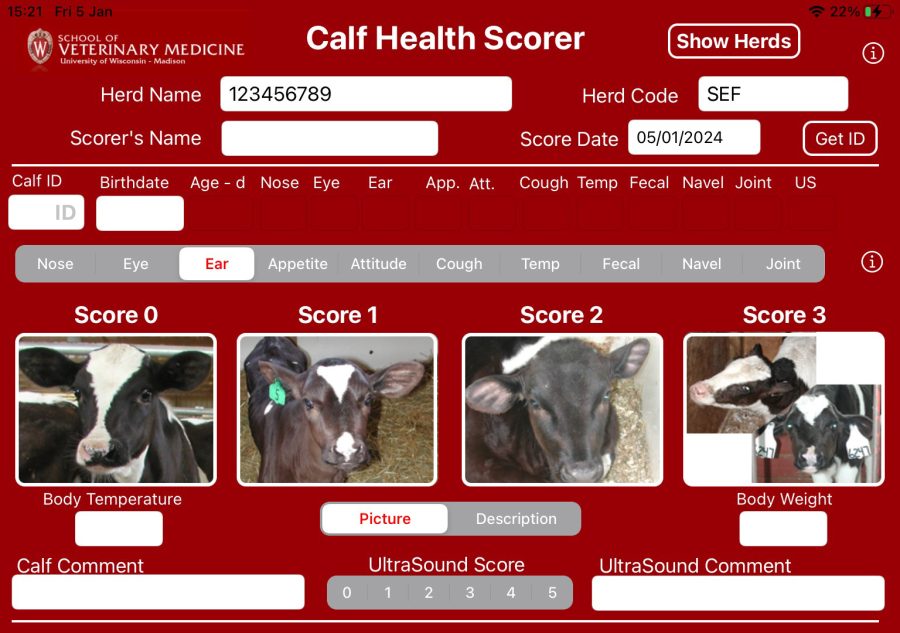Faye Heath, Westpoint Winchester, looks at detecting disease and improving welfare.
As technology continues to develop in the farming industry, cattle health software has become widespread and ever more sophisticated. Implementing this software on farm, however, can be a challenge and so app-based systems are increasingly popular.
One area of focus is calf health scoring, as maintaining good health and welfare in calves is vital to ensure healthy heifers enter the herd and strong calves are sent to market.
The Calf Health Scoring app was developed by the University of Wisconsin School of Veterinary Medicine and is based on the scoring chart previously developed by Dr Sheila McGuirk. It is a readily available software which allows for on-farm assessments of calf health using a range of clinical parameters.
These include:
- Nasal and ocular discharge
- Ear position and head carriage
- Appetite
- Demeanour
- Coughing
- Rectal temperature
- Faecal consistency
- Navel health
- Joint appearance.
A point-based system is used, with each parameter scored on a scale from 0 to 3 for normal clinical signs to very abnormal. Calves with two or more parameters scoring 2 or 3 are automatically placed on a ‘to treat’ or ‘recheck’ list depending on the clinical signs, as disease may be present.
An additional respiratory scoring app is also available from the University of Wisconsin. It uses the same interface to grade the respiratory status of a group of calves, as per the scoring method developed by Dr McGuirk and Dr Theresa Ollivett.
This app focuses on a group-based approach and assesses nasal discharge, ocular discharge, ear or head tilt and coughing to evaluate respiratory disease. Where 25% of animals in the group have two or more abnormal parameters, the group is classed as at a high risk of respiratory disease. This app can therefore be used in conjunction with the calf health scoring app to identify ‘high risk’ pens and facilitate individual calf scoring using the relevant app.
The calf health scoring app has a simple layout, with space to input herd identifier information as well as individual calf details. Each parameter includes photographic examples or descriptions for each score, providing a guideline on how to categorise abnormal findings, allowing for consistency, as using the same scorer is not always possible.
After completing all required scoring, a report can be generated and shared via email at the touch of a button. Information on the number of abnormal scores (2 or 3) is presented, along with a disease summary with percentages for respiratory disease, otitis, diarrhoea and more. Other options include filtering calves which have been identified as requiring treatment or rechecking.
While calves can be health scored as required on farm, twice-weekly scoring allows treatment response to be monitored. Health scoring is often carried out routinely on farm, but keeping a record of findings offers stockmen the opportunity to monitor and assess disease. These apps allow for digital records of individual and group health to be recorded and assessed, meaning calf health can be more easily tracked and allowing for earlier interventions and improvements to overall welfare.
Convenience, ease of use and low costs mean that calf health scoring apps are likely to benefit calf rearers. Using this software may initially come at a cost, as more time is dedicated to calf observation and the number of calves requiring treatment may increase.
However, by identifying disease sooner, its economic impact can be reduced, with earlier interventions, reduced mortality and a shortened disease duration. It also lowers the impact of disease on growth rates and lessens the risk to future health.
Particular problem areas on the farm or within specific groups can also be identified. This information may then be used to influence pen and group management, stocking density and treatment protocols. The apps discussed are currently available on Apple devices, with an Android version currently in development.







